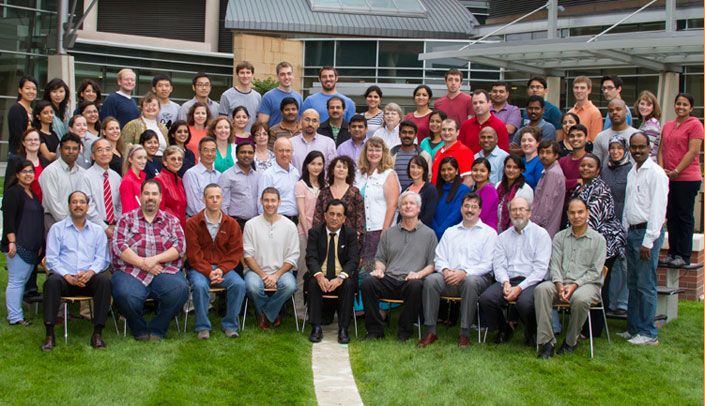In 1914, a postage stamp cost 2 cents. The Panama Canal opened. And the UNMC Department of Biochemistry and Molecular Biology (then known as medical chemistry) had its first three faculty members.
A century later, a stamp is 49 cents. Upwards of 14,000 vessels annually use the Canal. And the department has 22 primary and 34 courtesy faculty members, 40 graduate students, 19 research associates and post-docs, 16 staff members and four emeritus faculty.
“Our anniversary and today’s events are a celebration of the past and a springboard to the future success of our department,” said Professor Paul Sorgen, Ph.D.
The campus is invited to attend many of the activities, including a 9 a.m. keynote address by renowned basic scientist Vann Bennett, M.D., Ph.D., who discovered and developed the field of ankyrin science.
A Howard Hughes Medical Institute investigator and the James B. Duke Professor of Cell Biology, Biochemistry, and Neurobiology at Duke University Medical Center, Dr. Bennett first uncovered ankyrins, or anchor proteins, in human red blood cells.
The day also includes talks by such past faculty and graduate students as Terrence Donohue, Ph.D., Jamboor Vishwanatha, Ph.D., Dominic Cosgrove, Ph.D., and James Shull, Ph.D. See the full schedule.
In preparation for the anniversary, faculty members have combed the archives to better understand their department’s history. Said Richard MacDonald, Ph.D.: “From the late 1920s to the early 1970s, the history is pretty murky.”
Still, information has emerged regarding:
- Locations — Initially the department was in the North Laboratory (today, known as Poynter Hall). Later, it moved to the South Laboratory (Bennett Hall), then The Lied Transplant Center and today, the Durham Research Center, where the majority make their home on the seventh floor.
- Curriculum hours — Early on, 264 hours of the medical curriculum was devoted to biochemistry. Today, it’s about 80.
- Training of graduate students — The department excels in this area, having trained 140-plus, almost all since 1963. Prior to that, they had two graduate students in the 1930s and three in 1963.
- Changing course — Edward Bresnick, Ph.D., steered the department toward cancer research and an emphasis on graduate student training. He founded the Midwest Biomedical Student Research Forum, which continues today.
- Research funding — In 1955, it was roughly $14,000. Today, it’s $4.5 million.
Looking ahead, chair Surinder Batra, Ph.D., said the department is building strength in structural biology, cancer and protein trafficking, while continuing its robust training of graduate students and its longstanding focus on medical teaching.

excellent, keep up the great work!
Wish I could have been there for the celebration! Miss you guys!